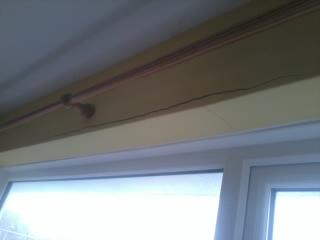Hi,
That time of year again where I am thinking about doing some odds and sods around the house.
When we moved into our current house (5 years ago) there was a small crach above the window in our main bedroom. This crack was approx 20cm in length and was 2mm at the widest part. Over time this crack is now approx 1m in length and 5mm at the widest part.
How on earth do you repair something like this? Is it possible that a relative amatuer can do something like this? Or will removing the lot and replastering be needed?
I have put on a couple of pics if it helps!?
Thanks
Chris M
That time of year again where I am thinking about doing some odds and sods around the house.
When we moved into our current house (5 years ago) there was a small crach above the window in our main bedroom. This crack was approx 20cm in length and was 2mm at the widest part. Over time this crack is now approx 1m in length and 5mm at the widest part.
How on earth do you repair something like this? Is it possible that a relative amatuer can do something like this? Or will removing the lot and replastering be needed?
I have put on a couple of pics if it helps!?
Thanks
Chris M



